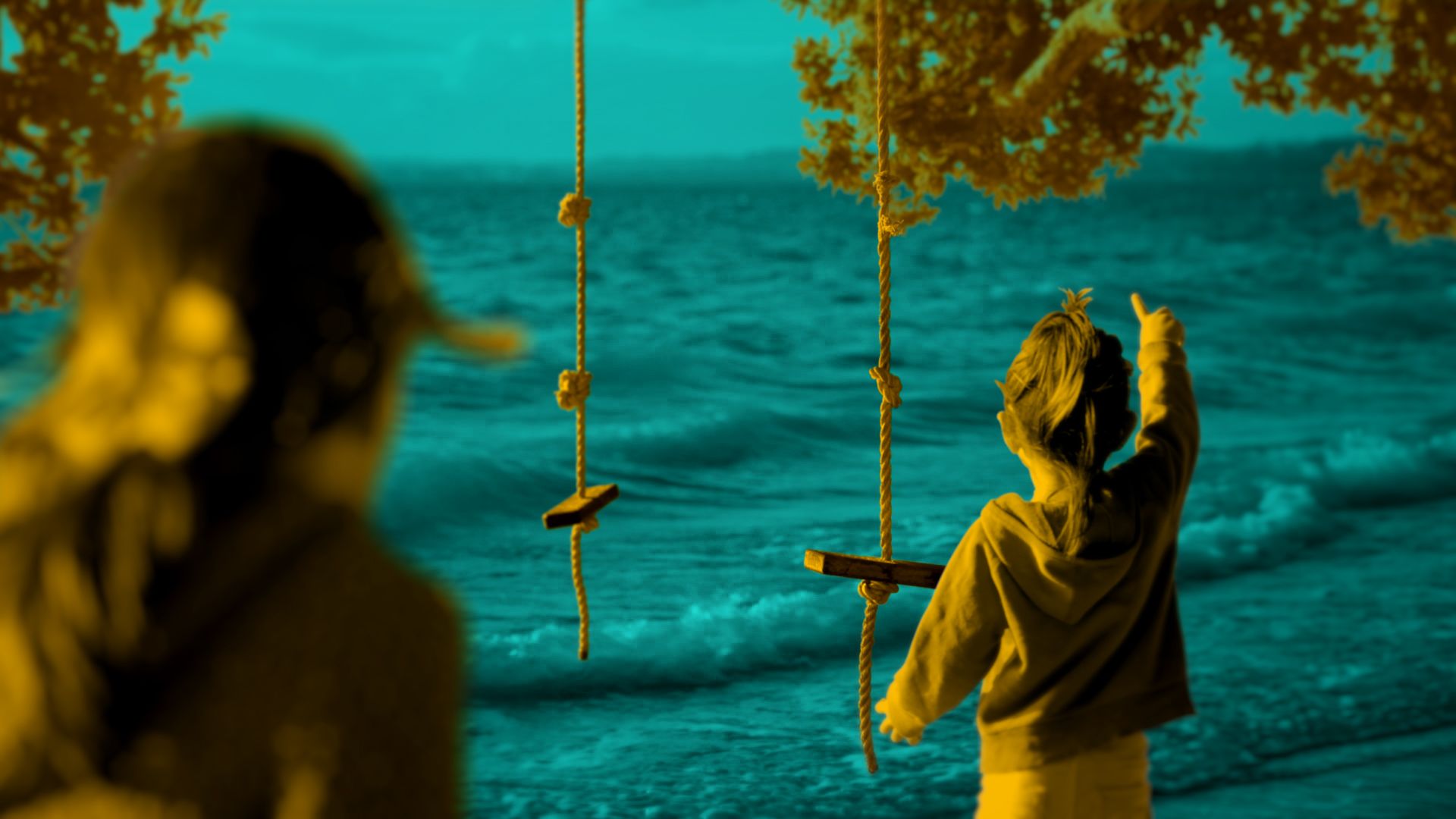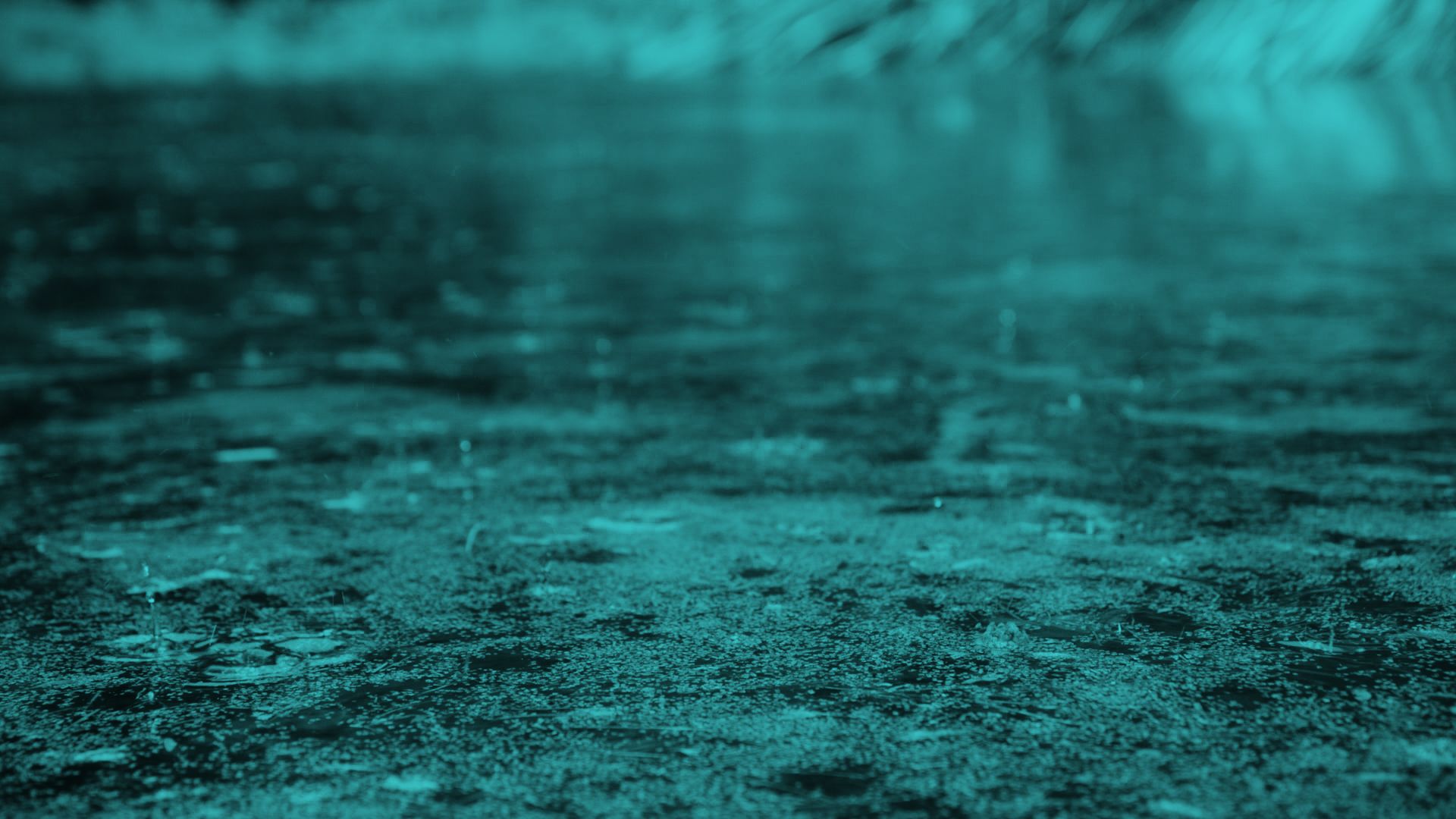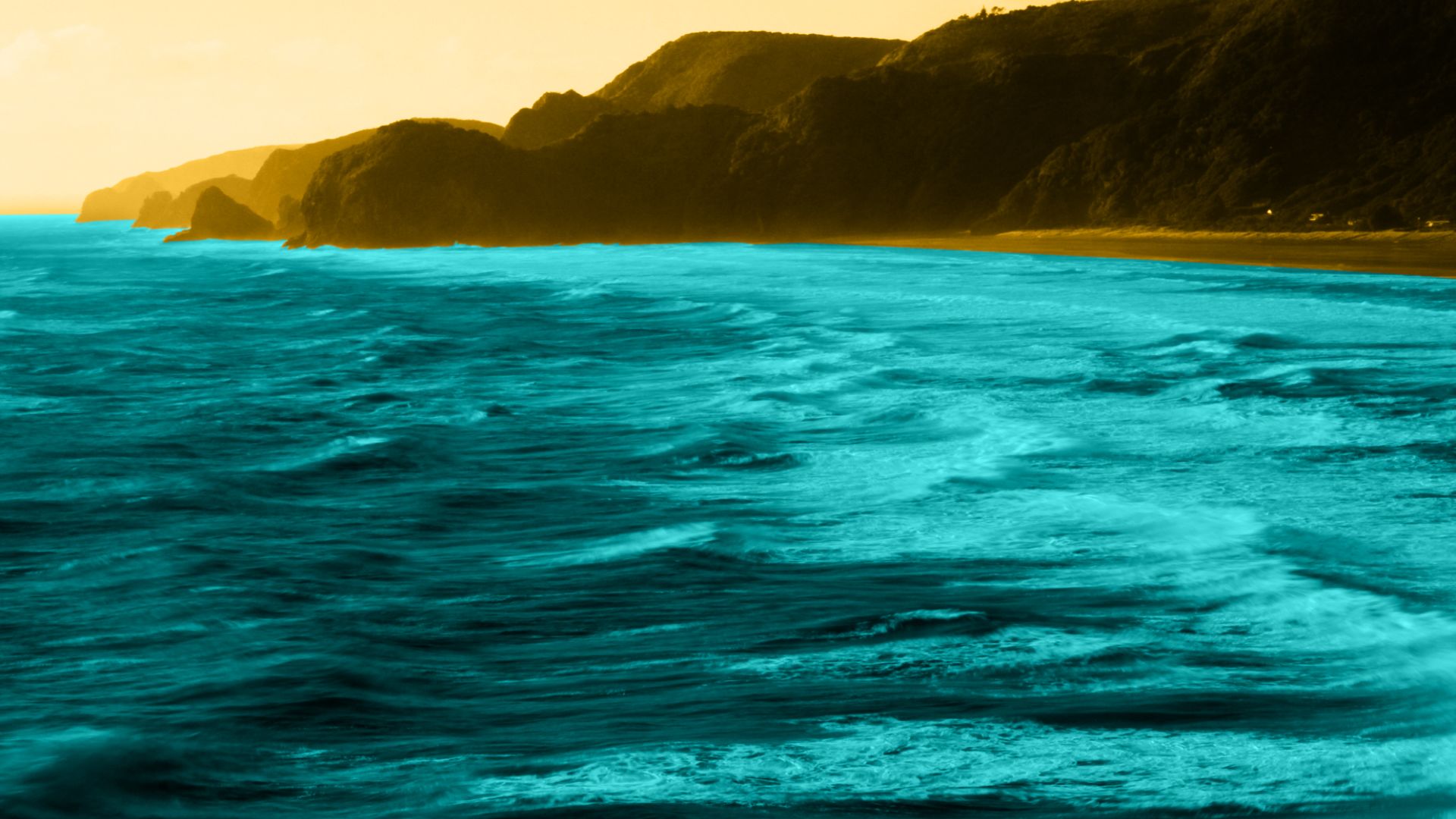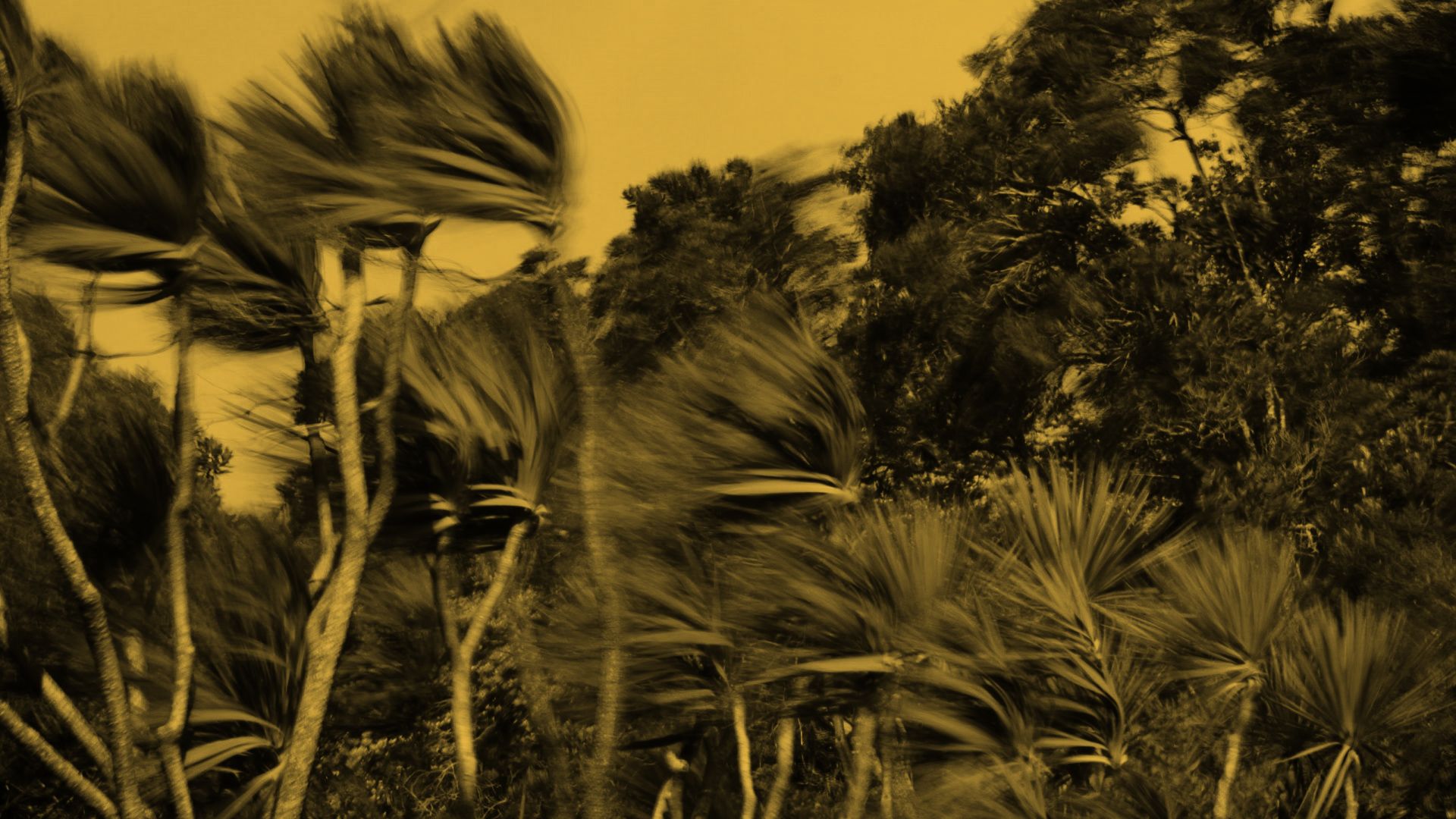THEY WILL INHERIT THE EARTH
What climate change will mean for New Zealand’s next generation

New Zealanders born today will likely end up knowing this country as a place where homes are uninsurable, iconic landscapes are unrecognisable and mosquitos carry serious disease.
Leith Huffadine reports.

Mel Brown is scared. She keeps thinking about what sort of world her 2-year-old daughter Lily will grow up in. As climate change kicks in, she fears the outlook will be grim.
But when we meet at an Auckland playground on a surprisingly balmy winter afternoon, Lily’s more focused on crawling through the plastic play tunnel and devouring the yogurt snacks her mum has brought along than any existential crisis. Perhaps ignorance is bliss.

With the climate crisis in mind, Brown has decided Lily will be her only child. She hadn't planned to have kids at all. “Then I fell in love. And the kind of natural progression was to think about starting a family.” But she worries about whether Lily will someday face food and water shortages, and the sort of society she will be a part of. What impact will Lily herself have on the world’s resources?
Statistics New Zealand predicts our population will reach 5 million next year. A new baby, born the day our population ticks over to that figure, will no doubt be presented to the media’s cameras, anointed the 5 millionth New Zealander. That baby, and its generation - tiny energetic people like Lily - will live in a dramatically different world to the one we currently inhabit.
“There may be no greater, growing threat facing the world’s children – and their children – than climate change.” That’s the opening line from Unicef’s 2015 report Unless we act now: The impact of climate change on children. The dangers of climate change are worse for children than adults, the report says. It warns of disease, malnutrition and the fragility of young bodies and minds in the face of extreme weather events. “If, as expected, climate change worsens each of these risks, it is children who will suffer most. Children will also feel these effects longer than adults, making them vital in today’s decisions about climate change responses.”
HEALTH
Malaria, mental illness and contaminated water

One day, the high-pitched drone of a mosquito approaching may serve as an alarm bell for New Zealand’s 5 million generation, warning of dengue fever or malaria. Auckland will be warmer due to climate change and, coupled with the fact that the city has both a major sea and airport (where people and cargo can bring in small, unwanted hitchhikers), the risk of disease-carry mosquitos establishing themselves in Auckland and the wider North Island is high.
It is only one of the health threats climate change may bring to the next generations.

Imagine this: In a regional town one hot summer there’s a drought, followed by a heavy rainstorm – the type of conditions expected to become near ubiquitous as the climate changes. That rainstorm washes bacteria from sheep faeces into the town’s drinking water supply. A third of the population falls ill with campylobacter.
Businesses close, leaving hastily-written signs on shop fronts. School is cancelled. “Crisis” blares the headline at the local news stand. Children are afraid to drink tap water. The sheep keep placidly chewing grass in their field, unaware. One looks up as a photographer snaps off a shot of them, then goes back to eating. Four people die in connection with the outbreak.
Exactly that could happen – in fact, it already has. In 2016, more than 5000 people in Havelock North were poisoned with campylobacter when sheep faeces was washed into the town’s drinking water supply.

A tanker brings drinking water into Havelock North after the town's water supply was contaminated.
A tanker brings drinking water into Havelock North after the town's water supply was contaminated.
Professor Alistair Woodward, a University of Auckland epidemiologist and public health doctor, says it’s the sort of incident that should serve as a warning of the type of scenario that will become increasingly common as the climate changes. New Zealand’s water supply is its “Achilles heel”, he says. “I think what happened in Havelock North was a salutary lesson... The town supply was not treated, as [with] many water supplies in New Zealand. People felt that the source was sufficiently secure, you know, it would not be at risk. In fact, it was contaminated.”
A Royal Society of New Zealand report, endorsed by the Ministry of Health, details an array of further likely health threats. Kiwis, young and old, will likely swelter through more heat waves, wade through more flooding and battle more fires. Hayfever sufferers may have to contend with more pollen in the air, as climate change extends the seasons during which plants flower, and there may be more air pollutants.
There is also likely to be an upswing in mental illness. Studies show heat waves increase hospital admissions and deaths attributed to mental, behavioural and cognitive disorders.
THE CLIMATE AND SEA LEVEL RISE
Melting roads, sink holes and crumbling coastlines

At her home in Avondale, Mel Brown is juggling work, Lily and an imminent house move. If it’s stressful, it’s nothing compared to what she fears Lily may face as an adult. She wonders what her quality - and length - of life will be. “What happens when the planet heats up to the point where it can't sustain life? Is that within her lifespan? If she has children, what are they going to be facing? It's such an overwhelming prospect when you start to let your mind focus on it that, it's kind of easier to put it all back in the box.”

Talk to Petra Pearce, a climate scientist for NIWA, and Brown’s concerns seem entirely valid. “Climate change is likely to impact almost every single part of our lives in the future,” she says.
That baby soon to be presented to the cameras as the 5 millionth New Zealander will be 21 in 2040 (a mid-century point frequently used for climate change modelling) and Lily will be a few years ahead at 23. They may be studying, beginning their careers or travelling.
The climate they’ll experience that year depends on the world’s actions now and whether we limit change by reducing greenhouse gas emissions, but no matter what they’re doing, New Zealand will be about a degree warmer than now, Pearce says.
Long, hot summers will be more common. It will likely rain more on the West Coast and less in most of the rest of the country, and, perhaps unsurprisingly, drought conditions will increase. Meanwhile, the sea will rise by about 20 to 30cm, while extreme winds are likely increase in eastern regions, but humidity is set to reduce everywhere except the West Coast.
The fire risk may have increased. Same with erosion.

Coastal erosion at Middle Beach, Dunedin.
Coastal erosion at Middle Beach, Dunedin.
Ten years later – in 2050 – the country may face worse. The sea level will likely have risen further, leaving an array of once-loved beaches off-limits. Orange barriers might block the esplanade on Auckland’s waterfront, which could have collapsed. Sinkholes may keep appearing. High tides may batter the sea wall, spraying water over it, sucking away the sand and rocks that stabilise it. When they can, diggers and workers will toil to reinforce it.
This type of scene is likely to become more and more common as the sea level rises and rises.
In Dunedin, it’s already a reality. University of Canterbury Associate Professor Bronwyn Hayward , who researches the intersection of climate change, sustainable development, youth, and citizenship, says we’re heading for a “significant period of grief” as we lose places that are special to us. “I had lots of family holidays with my parents in [Dunedin’s] Saint Clair on the beach. And that beach scape is already significantly eroding and undercutting … it’s a childhood memory I treasure and if the beach isn’t able to be accessed … that’s a loss personally.”

A digger works on a sinkhole at Saint Claire's beach, Dunedin.
A digger works on a sinkhole at Saint Claire's beach, Dunedin.
She points out that Māori are likely to face painful losses - there are many important sites along the coast, with thousands identified in a Department of Conservation report released earlier this year – pā sites, midden, burial sites and more.
By 2090, when that 5 millionth baby is about 70, Pearce says the environments we value – glaciers, beaches, forests - are likely to be further changed. “We could potentially have sea level that is a metre higher than at present. And think of all the low-lying areas that we value.”

Franz Josef's retreating glacier.
Franz Josef's retreating glacier.
What will the climate be like by then? It depends on whether we keep emitting the same level of greenhouse gases. “So the business as usual scenario, [in] which we have our continuing emissions at current rates, we may see around 4°of warming by the end of the century,” Pearce says.
That would mean each year Auckland would get about 100 days – that's more than three months’ worth – where the mercury reaches about 25°C or more. Right now, it gets about 30 of those days. They’re the type of days that get so hot that State Highway 1 melts, making the news, and the freezers at ice cream parlours struggle to stay cold.
If, worldwide, people greatly reduce greenhouse gas emissions, the climate might not look too different to 2040’s. Pearce, however, can’t see it going that way. “That is looking increasingly unlikely at this point.”
DEVONPORT ISLAND
It’s Auckland, 2050. Sea level rise has claimed some parts of the city sooner than predicted, and Devonport, once a North Shore peninsula, is one of many new islands that have appeared in the Hauraki Gulf.
That’s the premise of a possible future imagined in the Auckland Council’s Auckland Plan 2050. It’s not a prediction so much as an “initial exploration of what could be”.
And in this exploration, the Hauraki Gulf is not the only part of the city greatly altered by climate change. “Tamaki Drive and a number of east coast suburbs are set back to their original solid ground prior to landfilling,” the plan says. Helensville has reverted to an estuary.
Storm surges have removed coastal manmade structures like boat ramps, seawalls, bridges and culverts. “Unstable cliffs and shorelines are being fenced off. Havoc on exposed roads is more frequent. Flooding is common, regularly overwhelming waste water and stormwater systems and dumping silt everywhere as riverbank vegetation has been swept away.”
Domestic and export food production has been disrupted by extreme weather events and water scarcity means the city has to find alternative sources for drinking.

By 2050, some water-surrounded areas in the Hauraki Gulf will become “highly desirable island communities”, a council plan imagines.
By 2050, some water-surrounded areas in the Hauraki Gulf will become “highly desirable island communities”, a council plan imagines.
Yet, it’s not a negative outlook. In this imagined Auckland of 2050, the city is “blue-green, lush and tropical”. Revegetation helps manage variable rainfall patterns, cool homes and stabilise waterways.
The city has shifted – the west is more popular than the east coast due to sea level rise. Properties in the south are popular, and in the north, Wellsford’s elevated location means it’s a booming town.
As the Manukau Harbour and Firth of Thames become larger, marine farming becomes a replacement for protein sources lost as the dairy industry is flooded out. “We’ve decided not to fight the sea and to live with nature,” the plan says. “We’ve become experts in redesigning infrastructure, bringing our rivers out from underground pipes and rejigging systems into smaller units so that disruption is more contained, and it is faster and less expensive to fix damage.”
Meanwhile, some water-surrounded areas have become “highly desirable island communities”. They’re serviced by ferries, which have become the norm in the Waitematā Harbour and the new Hauraki Gulf islands, and the watery changes have reinvigorated tourism in the city.

DEVONPORT ISLAND
It’s Auckland, 2050. Sea level rise has claimed some parts of the city sooner than predicted, and Devonport, once a North Shore peninsula, is one of many new islands that have appeared in the Hauraki Gulf.
That’s the premise of a possible future imagined in the Auckland Council’s Auckland Plan 2050. It’s not a prediction so much as an “initial exploration of what could be”.
And in this exploration, the Hauraki Gulf is not the only part of the city greatly altered by climate change. “Tamaki Drive and a number of east coast suburbs are set back to their original solid ground prior to landfilling,” the plan says. Helensville has reverted to an estuary.
Storm surges have removed coastal manmade structures like boat ramps, seawalls, bridges and culverts. “Unstable cliffs and shorelines are being fenced off. Havoc on exposed roads is more frequent. Flooding is common, regularly overwhelming waste water and stormwater systems and dumping silt everywhere as riverbank vegetation has been swept away.”
Domestic and export food production has been disrupted by extreme weather events and water scarcity means the city has to find alternative sources for drinking.

By 2050, some water-surrounded areas in the Hauraki Gulf will become “highly desirable island communities”, a council plan imagines.
By 2050, some water-surrounded areas in the Hauraki Gulf will become “highly desirable island communities”, a council plan imagines.
Yet, it’s not a negative outlook. In this imagined Auckland of 2050, the city is “blue-green, lush and tropical”. Revegetation helps manage variable rainfall patterns, cool homes and stabilise waterways.
The city has shifted – the west is more popular than the east coast due to sea level rise. Properties in the south are popular, and in the north, Wellsford’s elevated location means it’s a booming town.
As the Manukau Harbour and Firth of Thames become larger, marine farming becomes a replacement for protein sources lost as the dairy industry is flooded out. “We’ve decided not to fight the sea and to live with nature,” the plan says. “We’ve become experts in redesigning infrastructure, bringing our rivers out from underground pipes and rejigging systems into smaller units so that disruption is more contained, and it is faster and less expensive to fix damage.”
Meanwhile, some water-surrounded areas have become “highly desirable island communities”. They’re serviced by ferries, which have become the norm in the Waitematā Harbour and the new Hauraki Gulf islands, and the watery changes have reinvigorated tourism in the city.
WAR AND PEACE
‘Things can go bad pretty quickly’

Mel Brown’s brown and white cat is curled up asleep on her lap now and her dog is nearby, lounging on the floor. She has moved on to talking about how civilisation is likely to change as Lily ages. "I guess I worry about the society she’ll live in. Whether or not there'll be so much more conflict and war in the world over natural resources by say, 2050. If she'll live in a society where people are even more selfish, or if she will grow up in a community that looks after one another.”
Can you imagine your children being affected by warfare in the 21st century? At what point do they decide to flee and become a refugee? Is it when the first conflict breaks out, or when buildings are crumbling under constant bombardment by air strikes or tanks?
It’s far-fetched in New Zealand, but the world’s already seen a war in which climate change was a factor, says Victoria University of Wellington climatologist Professor James Renwick. A drought, estimated to be the worst in about 1000 years - with a “real climate change fingerprint” - contributed to the Syrian civil war, he says. Hundreds of thousands of people have died during the war, while millions of people have been displaced.

Climate change contributed to the conflict in Syria, says climatologist Professor James Renwick.
Climate change contributed to the conflict in Syria, says climatologist Professor James Renwick.
In a report published last year, the New Zealand Defence Force said climate change will be one of the “greatest security challenges” it faces in coming decades. “The intensifying impacts of climate change will continue to test community resilience and heighten security challenges across the culturally diverse Pacific region,” it said. “When the effects of climate change intersect with a complex array of environmental and social issues, they can be significant contributors to both low-level and more violent conflict.”
“Outfits like the Pentagon in the US call climate change a threat multiplier”, Renwick says. “Climate change just stresses populations in various ways and if people are already feeling antsy about their neighbours, things can go bad pretty quickly.”
There are well-established relationships between aggressive behaviour, violence, suicide and temperature, he says. Basically, the warmer it is, the more irritated people get.
DEMOCRACY IN DANGER
‘The temptation is to suspend democracy every time you have a big disaster’

A climate disaster has struck. Thousands of people are without homes and basic infrastructure and utilities like roads, rail, water and power have failed. Regions are cut off by slips and the Defence Force is delivering medical supplies by helicopter as a rainstorm batters the country for days.
Barges are employed to bring in food, as supermarket shelves are stripped bare by hungry residents and tourists. They’re trapped by rising flooding described as a “wall of water”. People are warned of possible contamination from sewage. Crops are lost.
Similar scenes played out as Cyclone Gita smashed into the Tasman District in early 2018.

This storm is far worse though. It’s a humanitarian crisis and the government is trying to deal with the situation. Maybe it seems like there’s no other way to cope with the disaster and get things done but to suspend the normal democratic process.
While that might be a hypothetical scenario, Canterbury University’s Hayward says maintaining democracy will be the biggest issue to face the 5 millionth New Zealander’s generation. “When we have really big climatic change and regular disasters, the temptation is to suspend democracy every time you have a big disaster but because … climate-related disasters are going to be a regular part of children's lives, one of the big challenges is how we actually sustain normal decision making that is fair and inclusive, when (climate) emergencies are going to become part of the backdrop of life. That’s what I’m most fundamentally concerned about at the core, really.”

Edgecumbe after a stop bank on the Rangitaiki River breached during ex-cyclone Debbie in 2017.
Edgecumbe after a stop bank on the Rangitaiki River breached during ex-cyclone Debbie in 2017.
If the next generation’s lot seems challenging, it’ll be even harder for Māori or Pasifika, or anyone at the lower end of the socio-economic scale - especially when it comes to health issues.
Dr Rhys Jones, Ngati Kahungunu, a public health physician and senior lecturer at the University of Auckland, says climate change will potentially exacerbate inequalities that already exist. “Some of that is due to just social economic inequality, but there are also some particular aspects that I think make the situation a bit different for Māori and Pacific communities. Māori in particular [are more likely] to be living … in rural and remote areas, and often [on] marginal land and [in] poor quality housing.”
That puts Māori more at risk of sea level rise, storm surges and extreme weather events. Plus, the transition away from coal, oil and gas could cause unemployment issues for regions like the West Coast and Taranaki, Jones says.
Will the 5 millionth New Zealander be a roofer, a vineyard worker, a drain layer? The warming climate won’t be kind to people who work outdoors, Jones says. Think about those 100 days where the temperature may hit 25°or above - it will be tough on their bodies and their health. But it will be harder on those who end up in poverty or homeless. Exposed to the elements, they will face heat stroke in soaring temperatures, hypothermia in the cold and more infections, the University of Auckland’s Dr Meg Parsons says.
SHANNON GILMORE

Shannon Gilmore is too worried about climate change to have children. The 29-year-old from Christchurch just can’t be sure of what the world will look like in 50 years or beyond. “The more I research on the subject the more I feel despondent,” she says.
Since she was in her teens, Gilmore has worried about the “wanton destruction of nature” and how it would impact her future. “There was a natural progression to how it would affect any kids I would have.”

She did consider the positive impact having children might have. “Any children I had might actually be part of the solution. There is a high chance that they would be aware individuals who would help fight for a carbon zero future.”
But the reasoning didn’t stand up. “One of the best ways to reduce one's own carbon footprint is not to have children. Additionally, how can I have kids while I am concerned that they may have a tough life under climate change? This is merely passing the responsibility and decision making onto them; making them decide whether or not it is ethical to bring another life into a world that may look more and more dystopian.”
It’s frustrating, she says, that it’s she who is having to make this type of decision when her own impact on climate change is nothing compared to big business. Especially as she likes kids. “Many of my friends and family have children in their lives and there are a number I’m absolutely smitten with. It pains me to think I may never be a mother or have the relationship that my mother and I have. I’d love to gift a child into my family, my grandfather would be over the moon and my mum would finally be able to admit her deepest desire to once more play with Barbies.”

Shannon Gilmore as a child (centre) with her mother.
Shannon Gilmore as a child (centre) with her mother.
She estimates one in five women she knows are considering not having children due to concerns about climate change. People need to make their own choices, she says. “However, we know that overpopulation is one of the big drivers of greenhouse gas emissions, having fewer children is a gift to everyone's future.”
Besides, by not having children she will be able to put more time and effort into fighting for a carbon zero future. “I will not simply hand the responsibility down to a child and their children.”
MONEY AND THE ECONOMY
Marketing messes and uninsurable houses

Maybe the 5 million generation will one day want to own their own homes. But should they pour money into property if they can’t get insurance?
Already, Wellington’s renters are struggling to get their contents insured and home owners are fighting to get cover, too. The Insurance Council say it’s “no secret” there are major insurance risks in Wellington, including earthquakes and climate change. Those risks are so high that the city’s biggest insurer, IAG, has been rejecting more applications than it was approving.
Dr John McDermott is the executive director of Motu, which conducts economic and public policy research. He says the question of how to obtain insurance will become a major challenge for New Zealanders. “If you buy a house on a coastal property, will the insurance industry even want to know you at this point? … In the past, the insurance industry has been quite willing to insure across an entire area – so New Zealand was treated equally,” he says. “That pools the risk but as soon as they start slicing and dicing, saying ‘We’ll insure inland areas like Hamilton but we’re not going to insure coastal areas’, what do you do, how do you manage that?”
Then there’s our economy. We will have to consider our reliance on importing and exporting, McDermott says. And agricultural-based “clean green branding” will be the problem. “There’s a potential that customers will say, ‘Well, all your cows produce methane, that's a dangerous greenhouse gas, plus you have to spend a lot of carbon just to transport it to our destination, we just don't want to buy from you’. It’s a marketing brand risk about how our exports are acceptable in terms of global preferences in the future. I think we have to think really hard about that. Because if we get that wrong, that would be disastrous for many of our exports."
Sectors like agriculture and transport will be hit hardest, he predicts.
HOPE SPRINGS ETERNAL
‘The future has not been written yet’

It might seem easy – even the only option – to be despondent, but Niwa’s Petra Pearce says it’s not worth focusing on the “doom and gloom”. Adapting to change will be difficult, but there will be opportunities - and life will go on, she says. “We'll still go on holidays to the beach, but … it might be slightly different to what it is now.”
Renwick describes himself – after decades of trying to get people to take action on climate change – as a “frustrated optimist”. “The future has not been written yet. We don’t know what technology, what solutions, what political change might happen in a couple of decades and the future could actually be quite bright. You know, the climate has always changed and it will keep changing for a while ... The conversation is shifting and there is still time so yeah, I do remain an optimist.”
It is children that have given Hayward faith. She warns against “death narratives” that accompany climate change news. They reinforce apathy, she says. “I fundamentally still remain deeply optimistic from watching children coping in all sorts of situations around the world that are quite severe, and some are really extreme ... We're only 5 million people, only a quarter the size of most world cities, you know, we can actually affect change and we can do it because we're relatively lucky compared to the rest of the world, in the extremes that we will experience.”
At the end of the day, having a child has been rewarding for Brown. “Lily’s hilarious. She brings a lot of entertainment. She brings a lot of frustration, too, but she's a wonderful little person. And she's fiery. I hope that fiery feistiness holds her in good stead for the rest of her life. She's a pretty cool little human.”

She’s asks herself, nonetheless, if it was selfish to have had her. She thinks about the impact of a single additional person on the world. She thinks about the impact on natural resources. And her answer changes.
“I kind of flipped from ‘I can justify this’ to, ‘Actually no, this is being selfish, choosing to bring children into the world’ to ‘Maybe one is okay, because then the two of us are replacing ourselves with just one other human being’.
She wishes it wasn’t something she had to consider. “There are days where I feel guilty for having had my daughter when it comes to the bigger impacts that it's going to have, and the impacts that overpopulation is ultimately having on our planet … But I also feel guilty [about] what world I am bringing her into.”
One day, she’ll talk about her decision with her daughter. “I want her to understand that she's desperately wanted and that it was a really huge decision to bring her into the world. I think we'll just have to be honest with her about trying to make sure she's got as fulfilling a life as possible without siblings, and have incredible friends around her, but also that we've got some responsibility in this world to protect the Earth. And she's part of that.”
Reporter Leith Huffadine
Executive editor Veronica Schmidt
Videographer & photographer Luke McPake
Art direction & design Luke McPake
Additional photography Brad White, Simon Rogers, Katie Todd, Robin Martin, Claire Eastham-Farrelly, Rebekah Parsons-King, Richard Tindiller, Ian Telfer, Otago Daily Times, 123RF, AFP
Devonport satellite imagery sourced from the LINZ Data Service licensed for reuse under CC BY 4.0


